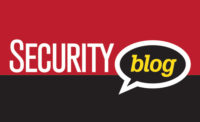Much has changed in visitor management procedures and policies since the days of entering a visitor’s name in the log book and slapping on a sticky badge with a handwritten name on it. Often, visitors were not even asked for identification, and there was no way to track or confirm if or when they left the building.
Given the current state of affairs around the world, the need to manage and monitor visitors has become a high security priority at most facilities and manual visitor enrollment systems have been replaced by state-of-the-art visitor management systems.Thesesophisticated systems provide necessary and added security functions for protecting employees, assets and buildings by confirming a visitor’s identification, compiling relevant information that could impact their visit or the organization and allowing true, real-time system integration, among other benefits.
Advanced visitor management systems include user conveniences such as scanning driver licenses, business cards and passports; badge printing in advance or upon arrival; and pre-registering of visitors using a Web browser. Automatic downloads of government watch lists can be used to alert receptionists or security guards of VIPs or unwanted visitors.
Additional visitor management system specifications depend on the application (i.e. hospital, school, etc.) and the particular needs of the organization. For instance, a power plant may require that all visitors read a safety agreement and sign an electronic signature capture pad. Signatures are stored in the visitor management software and can be printed on badges and in reports. Or, an unsupervised lobby may only require a self-service kiosk consisting of a touch-screen monitor, keyboard, printer and various optional devices. The kiosk enables visitors to scan their identification, enter the appropriate data and print a badge. The system notifies the host via e-mail of the visitor’s arrival and records all data in an easy-to-use format. For heavy visitor traffic locations, mobile devices integrated with barcode or magnetic swipe readers and printers can be used to allow security personnel to complete the identification, authentication and badging process before the individual enters the building.
Among the many other available application specific software and hardware options, following are a few of the most common.
Education– Schools at all levels are under increased pressure to tighten security while maintaining an appearance of friendliness and specialized visitor management systems can help administrators achieve this balance. Using dedicated software, visitors, volunteers, temporary personnel and others are easily signed in and given temporary badges to indicate their presence is authorized. The software allows input of child custody information to provide school staff with accurate assurances for custodial issues. To enhance the safety and security for children, schools/districts can opt to perform automatic sex offender screening for all visitors. Comprehensive reports on the total number or type of visitors are easily generated using custom designed templates in addition to a variety of common report templates that are available.
Healthcare and Medical Facilities– As semi-public facilities, hospitals and medical care facilities have special challenges when it comes to managing visitors. Systems designed to address these particular challenges can screen, photograph, badge and track visitors and help keep out unwanted or uninvited visitors. Additional patient information pulled from hospital’s HL7 systems, provide patient’s exact location in real-time building, floor,, room and bed number can also be collected and used to monitor visitors. Unique badges with self-expiring access can be designed for each ward or specific department and help to ensure the overall safety and security of both the patients and staff. Some systems even feature maximum visitor alerts so that a patient or those patients in a semi-private room are not overwhelmed. Hospital visitor management systems are also designed to support HIPPA, HR7 and other government requirements such as those from the Joint Commission and Centers for Disease Control and Prevention.
Corporate– Keeping the wrong people out and letting the right people in quickly and efficiently starts with an organization’s front lobby. It’s here that the first steps are taken to ensure the safety and security of building occupants and assets. Visitors can be discretely screened against historical directories or watch lists to determine whether to approve or reject visitor requests – all within a few seconds. For pre-registered visitors or groups, a custom email can be sent to the visitor showing visit details, directions and a barcode that will speed the sign-in process. Another important element of a corporate visitor management system is the capability for integration with the building’s access control system and, in multi-campus enterprise applications, the ability to integrate with existing IT infrastructure including SQL and Oracle databases, and ODBC and LDAP directory systems.
Along with these application specific examples, visitor management systems used in government offices are deployed with a specialized module that processes PIV-compliant credentials in compliance with Homeland Security Presidential Directive 12(HSPD-12).
Today’s visitor management systems do much more than enhance “lobby” security measures. From sophisticated integration capabilities to feature-rich functionality, visitor management systems leverage technology to improve management of physical security.



